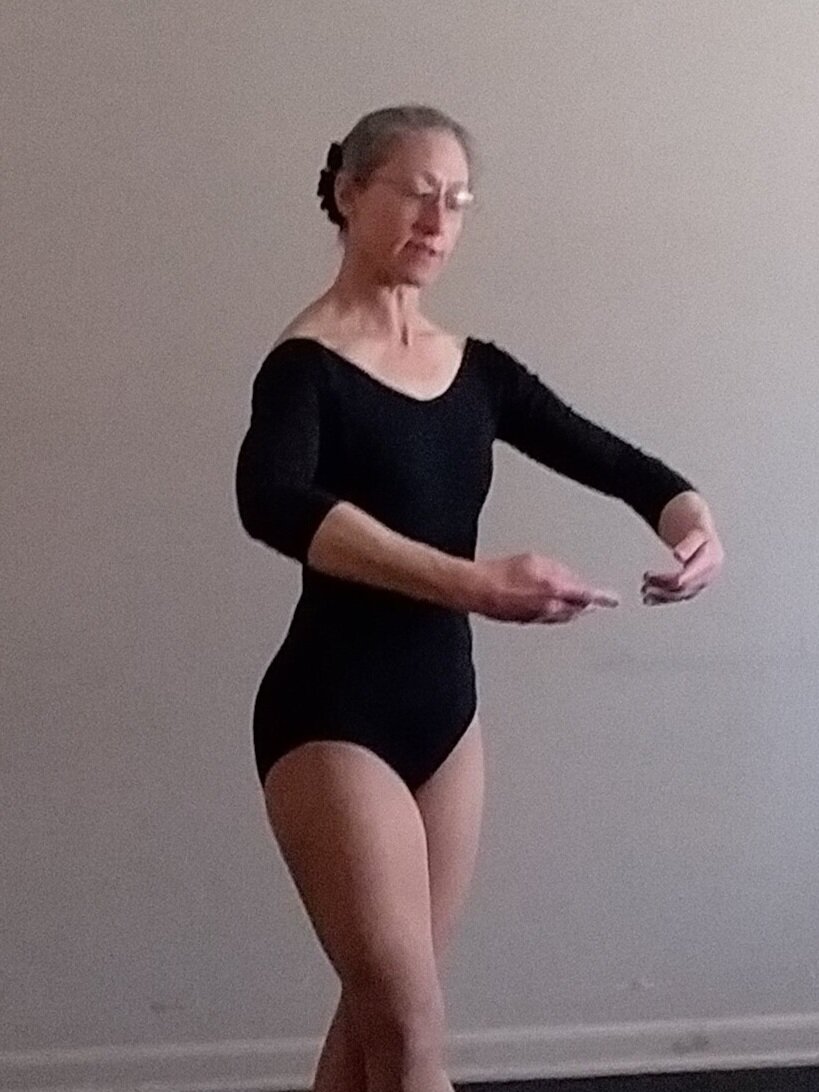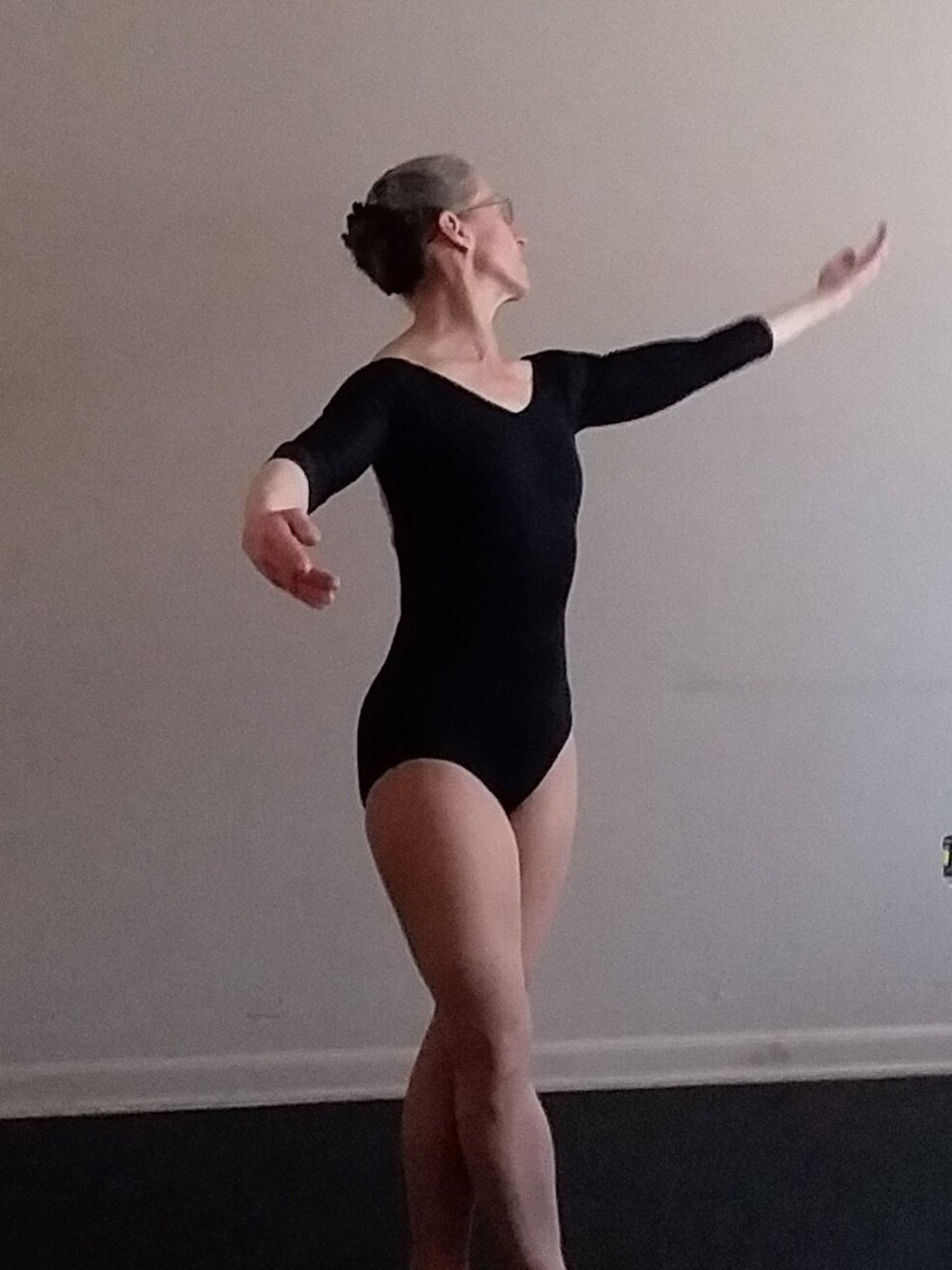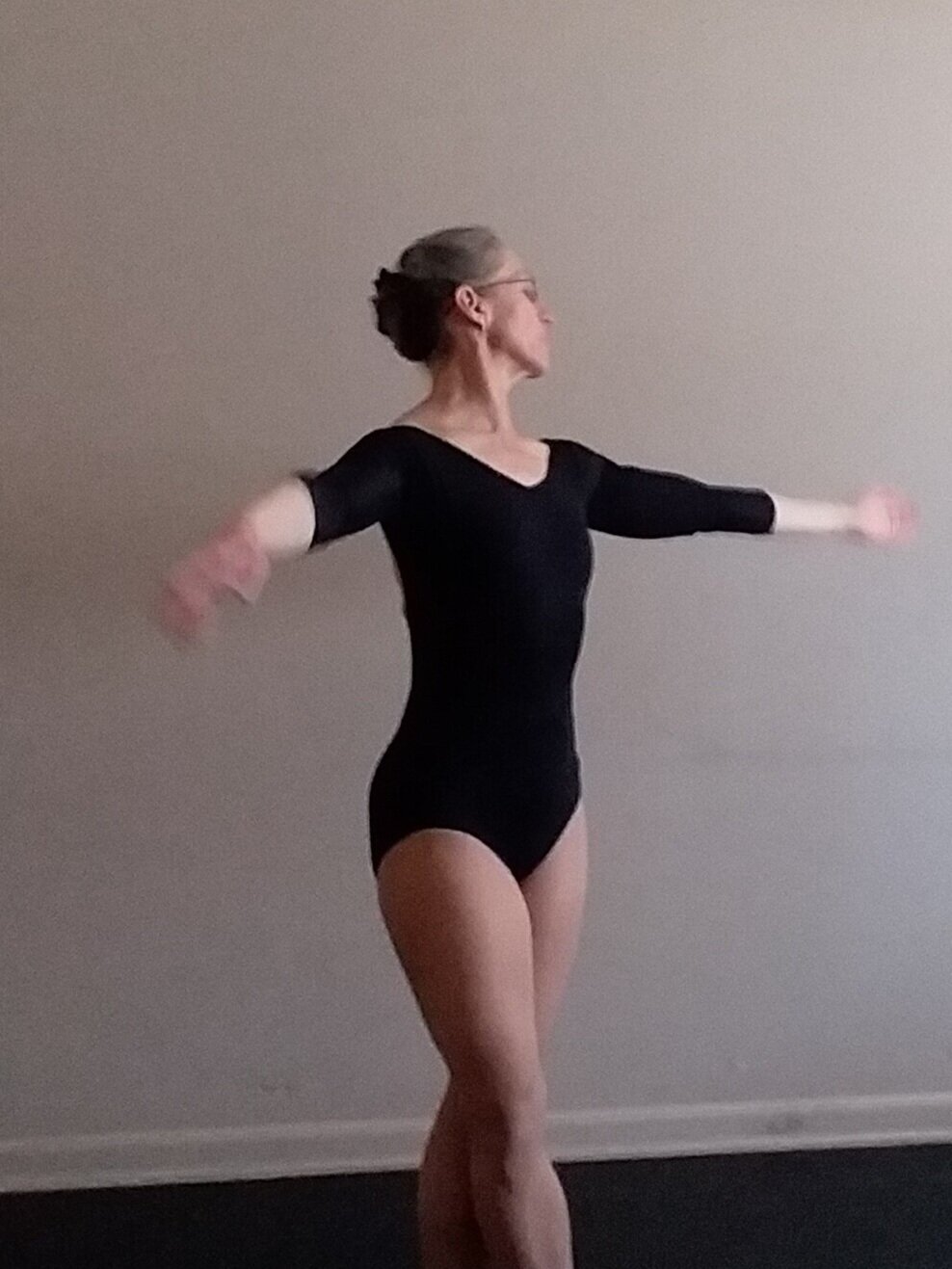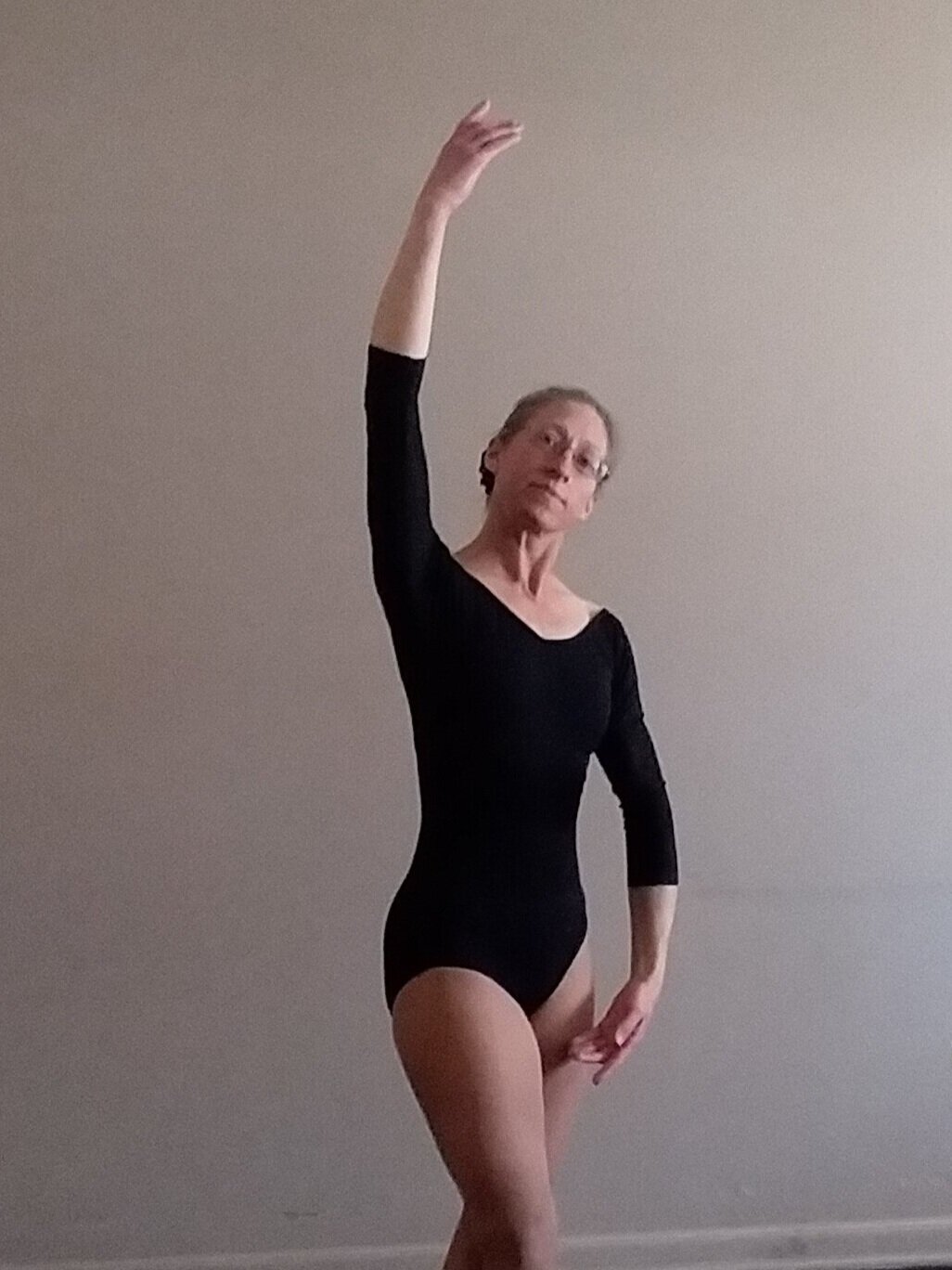Vaganova Second Port de Bras
In my previous blog we addressed the details of Vaganova First Port de Bras. “Port de bras” means “carriage of the arms.” This blog continues our series on the six established Vaganova port de bras exercises by delving into the Second Port de Bras. As you progress through each of these port de bras blogs you may wish to refer back to Zombie, Doll, Swan or Human – Its all in the Arms to remind yourself of some of the specific arm position details. I also recommend that you practice your port de bras AS you are reading, taking each detail into account and creating a muscle memory as you do so.
Second Port de Bras trains the use of the arms in separate and opposing movements with complex involvement of the head and focus.
Stand with your body in croise (angled an eighth turn from front). If the arms are in preparatory to begin, they will rise together to a circular First Position across from your diaphragm. The eyes follow the palm of the downstage hand (that one which is closest to the audience or front) as the head inclines slightly over the upstage shoulder (that one which is furthest from the front).
From this point, they part ways. The upstage arm rises overhead to Third Position while the downstage arm opens to Second Position. During this movement the eyes follow the downstage hand towards the front.
Now your upstage arm opens to Second Position and the eyes and head follow this movement. While the upstage arm continues its movement downward into Preparatory Position, the downstage arm moves up from the side to Third Position. This downstage arm should lead its movement with the back of the hand, which turns as it arrives overhead. Simultaneously, the focus and head turn downstage again with a slight incline forward, looking under the downstage arm. From here, the arms move from their opposite positions towards one another, meeting in First Position where the focus is again on the downstage hand with the head slightly inclined over the upstage shoulder.
The Second Port de Bras involves quite a bit more complexity than First Port de Bras, both in the movement of the arms as well as in the use of the head and focus. It should be studied carefully as it provides an excellent basis from which to develop the coordination of arms and head together. The fluid and correct movement of arms and head are crucial training for a dancer whose movements may look unnatural, awkward, lifeless and robotic without these details. The dancer with elegant, expressive, fluid arms and head movements can draw an audience in to the internal emotional world the dancer seeks to convey while a dancer without this quality will generally deny his/her audience this deeper experience of the performance.







